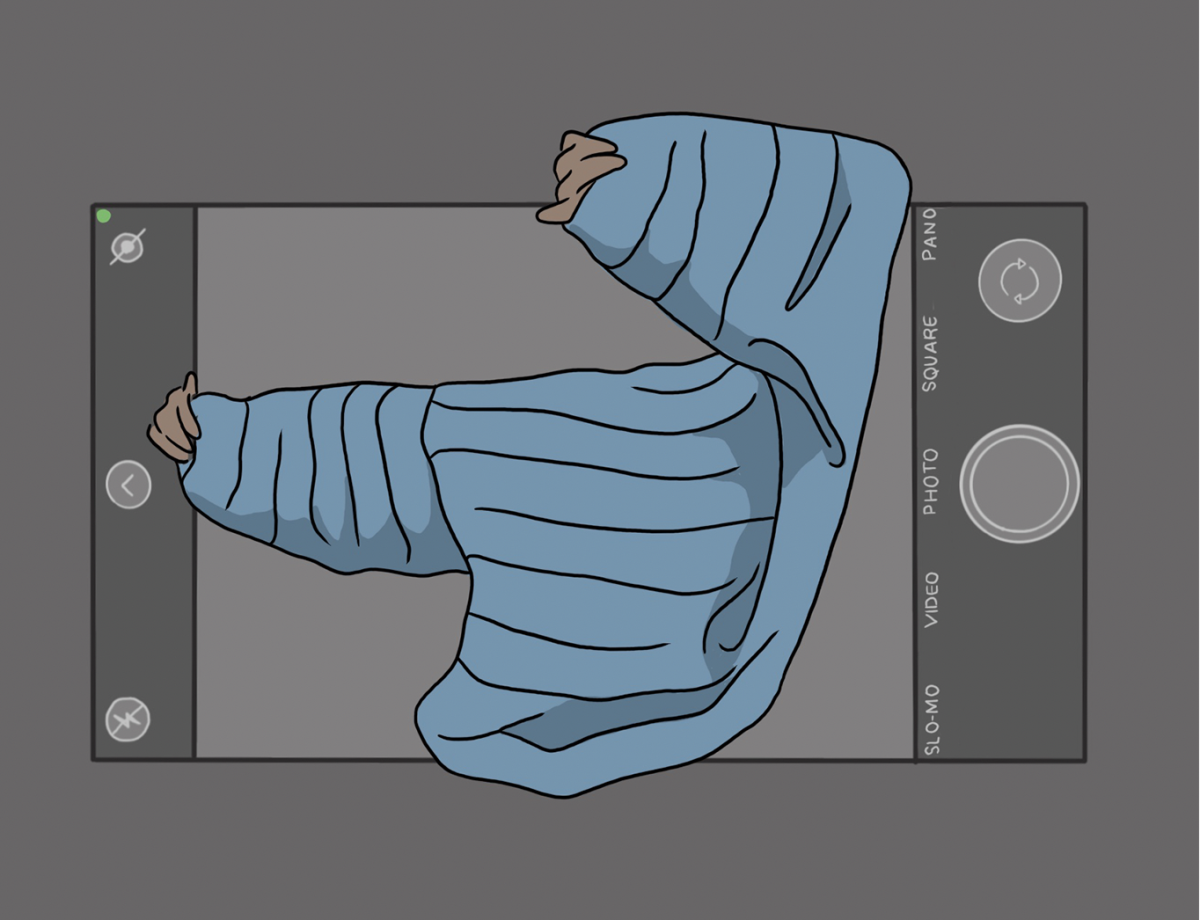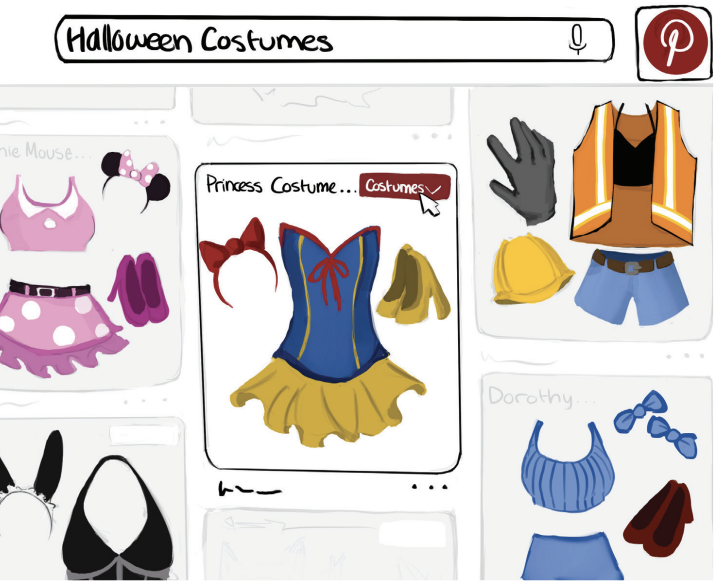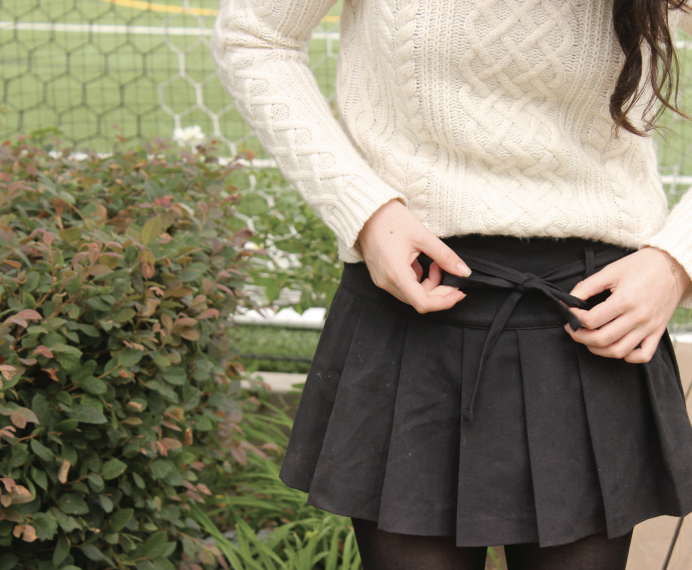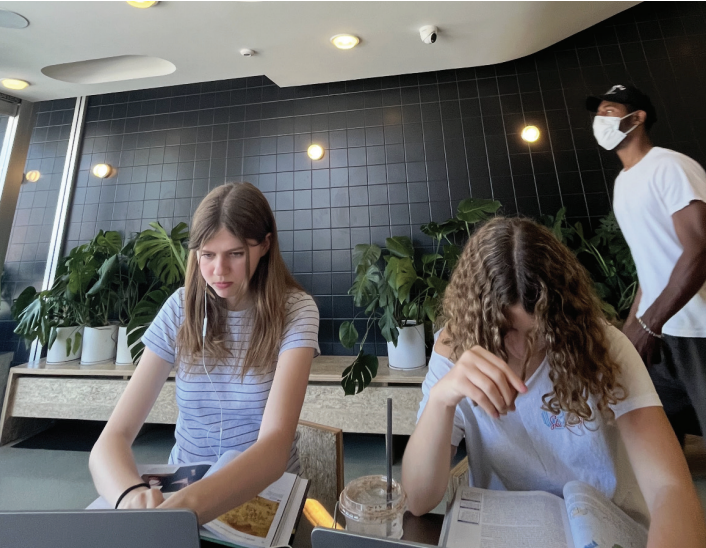What makes me love fashion is the psychological aspect. Clothing is a storytelling device for media as well as an expression of one’s mental state. One concept that can reveal the meaning behind outfit choices is “fashion vs. function,” an idea that can be used to analyze daily cloth- ing. “Fashion vs. function” polarizes two goals of clothes. “Function” focused style prioritizes convenience while sacrificing the surface level visual appeal of an outfit. In contrast, a “fashion” focused style doesn’t consider how appropriate an outfit is for a specific occasion and is most concerned with how the outfit looks.
This concept can be used to analyze outfits in multiple contexts like storytelling, historical materials and even your own style. For ex- ample, when an 18th century princess in a period-piece movie chooses pants over a corset, she is bravely making a statement through her outfit by defying societal gender expectations. In a more modern con- text, Maddy from the show “Euphoria” is an example of how fashion is used to showcase emotional turning points. At first, Maddy often chooses to wear slightly inappropriate “clubbing” outfits to school in order to visually showcase the bold attitude and premature adultification of her character. After a traumatic event, to depict her drastic mental health decline, her style’s focus goes from flashy fashion to baggier, plain clothing. Rather than dressing almost purely for looks, her outfits have a new function: disguise. This extreme change exemplifies the contrast in her mindset from fearless to wary. Those are examples of how fashion and function can drive character analysis. Now, let’s look at the role it plays in personal style.
Fashion choices can reveal information about your personality and mentality. In my own experience, phases where I went from one end of the spectrum to the other were unexpectedly my most insecure. When I prioritized “function,” I treated clothes as mere fabric on my body. My “I don’t care” attitude was inauthentic because, in reality, I was overly concerned with other people’s opinions of me. In contrast, I soon began to prioritize “fashion” and hyperfocus on how I looked. This phase was no better than my pure “function” phase, since I was dressing for the approval of others. As someone who wanted my clothes to express who I am or how I am feeling, I had to find a middle ground that was true to me. As I grow and mature, my style does too. I appreciate outfits that make me feel secure, comfortable and confident. Choosing clothes that hit the sweet spot of “fashion” and “function” takes careful thought. I suggest that you dress based on the vibe you feel at the moment and pull the look together in subtle ways. Try matching your jewelry to the buttons on your pants (some try not to mix silver and gold but this is totally up to you). Be meticulous about the combination of colors, patterns and fabrics in your outfit that all contribute to the overall energy of your look.
The clothes you pick have so much to do with how you feel in your day-to-day life, so I prompt you to think about the decisions you’re making. Are you using your clothes to hide something? How does your style change depending on your mentality? Are you choosing discomfort for external approval? Do your outfits accurately communicate how you want to be perceived or how you perceive yourself? Answering these questions can help lead you to a style that operates as a safe medium of expression while al- lowing you to enjoy the exciting nature of creative fashion. If you need help analyzing your style or finding clothes that make you feel your best, let me know and I would love to talk. I hope this article speaks to you and gives you something to think about.






